Restoration of a German lute created built by in 1627 by Hans Fichthold.
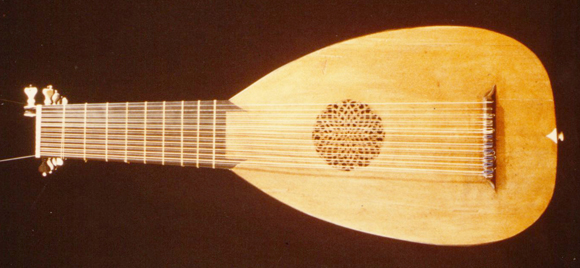
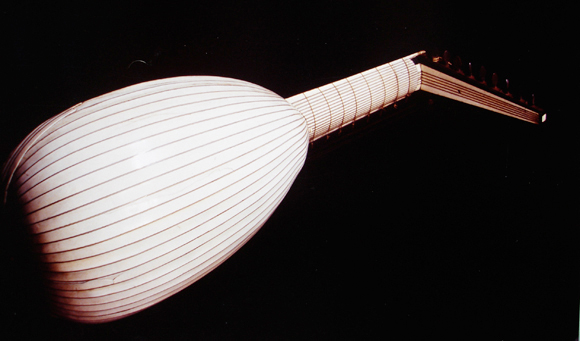
This lute had suffered a violent blow and the soundboard had quite literally exploded. However, the ivory case and veneered ivory neck were more or less unscathed.
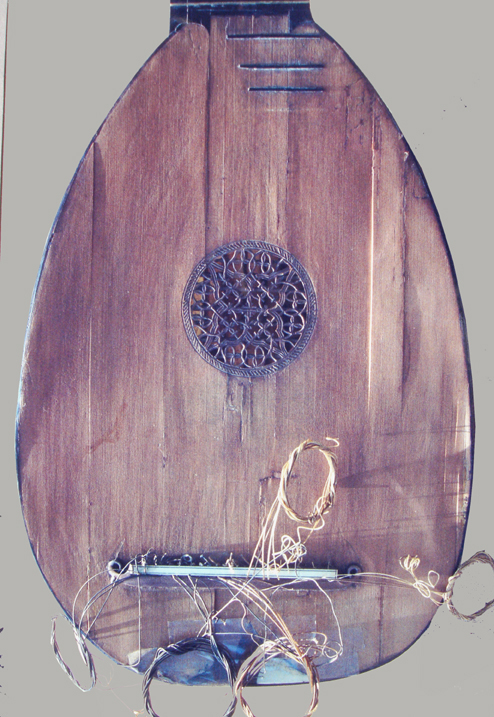
We took a close-up inspection of the lute and observed that, as with so many of the lutes that have survived over the years, it had undergone a series of alterations and reassemblies. The diagnosis for restoration was fairly straightforward: repair the recent breakage, and reassemble the lute. We had no plans to act on the historical integrity of this instrument, which remains in same antique condition as before the accident.
Since the soundboard had been practically removed, we adopted the standard approach:
- regluing of the splintering and ripped wood on the structural supports,
- splits and fractures repaired and reglued; no pins were used so as to not weigh down the soundboard, especially since the fresh-broken material didn’t need it; no deformation.
- Woodworm holes (towards the top-right of the soundboard) fillered using reworkable wood pulp,
- When we opened the lute we found marks suggesting a different, older bracing - evidence we were careful to note down. We produced the pair of bars needed to replace the missing or woodworm-damaged originals; these were easily positioned thanks to clearly visible outlines.
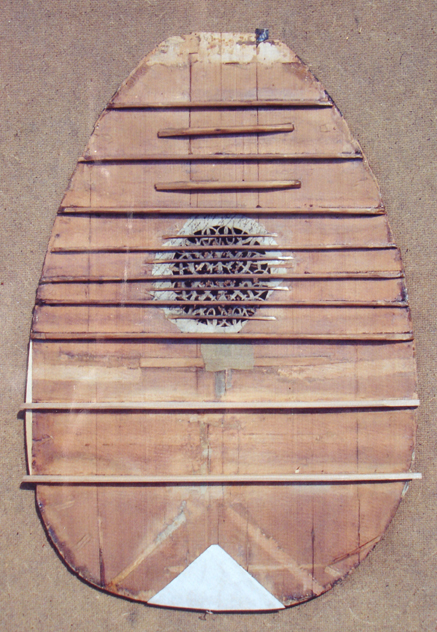
We sketched and photographed the heels, outline-silhouettes and inside labels.
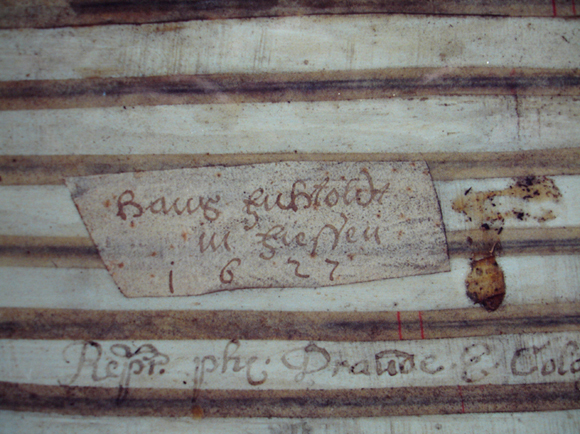
We also recorded the signature of the restorer who had worked on the instrument in 1909.
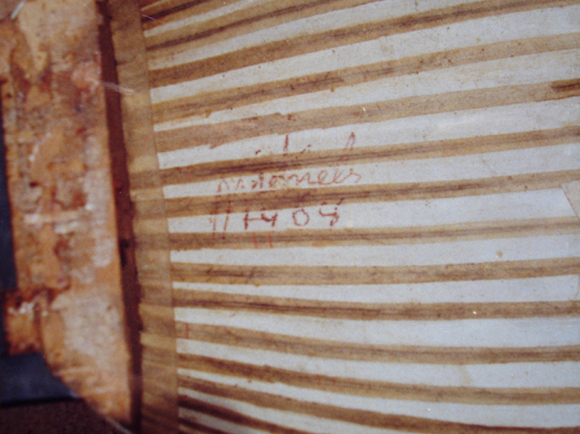
Soundboard reassembled, strings refitted.
Some general cleaning work was needed.
This was a classic example of a straightforward, hitch-free restoration. As agreed with the owner, we simply repaired the breakage and re-stringed the instrument. There was no particular background research to perform, no missing features, no parts to reproduce from yet-to-be-found models.
The lute we restored was eventually purchased in 1998 by the Paris Museum of Music, where it forms part of their collection, registered under reference E.998.2.2.
The curator’s reference describes it as follows:
“13 courses : small set: 2x1, 9x2,
shell built of 27 ivory tonewood ribs separated by a purfling of 3 binding strips (ebony-ivory-ebony),
sprucewood soundboard (picea excelsa),
rosette cut from heartwood,
4-section cap separated by a purfling of 3 binding strips (ebony-ivory-ebony),
neck and pegbox in veneered ivory,
ebony fingerboard,
hand-written label carrying the words: Hans Fichtold / im Fiessen / 1627,
reassembled in the 18th century, the truss pin designed to hold the first string under tension has been lost.
Source: Paris Museum of Music Media Library".
http://mediatheque.cite-musique.fr/masc/default.asp?URL=http://mediatheque.cite-
musique.fr/clientbooklineCIMU/toolkit/p_requests/default-collection-musee.htm
Nota-bene.
Since 2004, the application of the "laws regulating the Museums" has obligated the French museums to hire – for the restoration of objects kept in public collections – "habilitated" restorers. By these terms, we intend persons who have received the State diploma delivered by the Institute for the National Patrimony. This diploma covers all kinds of techniques and materials, but neither expertise of musical instruments nor lutherie or acoustics are taken in consideration on the cursus. From now on, only the "habilitated" restorer for "wood" (all the woods from all over the world?) is qualified to restore objects of the patrimony kept in our national collections and can equally treat beams or floors, furnitures or boats, statues and musical instruments as long as this person has the "habilitation". Therefore, a polemic has started between the museum curators who, realizing their incompetence in the field of lutherie wish to keep the historic instruments only for their visual and cultural aspect and the luthier who consider that the sound of an instrument, being its own specificity and identity, must be restored on the same level as the box that produces it.
Professionals who have – long before the title of "curator" was invented – analyzed, expertised, constructed and restored musical instruments (by countries and by categories: wind, stringed, keyboards, brass, etc.) find themselves put aside from the French public collections.
The "habilitation" for a non universitarian being almost impossible to obtain, these professionals have to apply their art to private collections.
Read: “Habilitation-restaurateur-des-musees.com” (in French).
